Mid-pandemic, I was buying a lot of ebooks and it was getting pricey. Then I got wind of a digital library service called hoopla.
hoopla Digital, of parent company Midwest Tape, is a for-profit platform that makes ebooks, audiobooks, music, and movies—and even some courses now—available through partnering public libraries in the US, Canada, and Australia (New Zealand coming soon).
Oh, and digital comics. Lots of comics.
I soon signed myself up for a free account with my library card. When I looked at the graphic novels selection, I practically salivated. hoopla had the best digital comics library collection I had ever seen. Was someone really offering me this many free graphic novels? Did they even know me?
One major standout about hoopla versus, say, the platform OverDrive, is that all of its 900,000+ titles are available instantly to patrons whose libraries have added the service. So there’s no waiting for others to return it.
Cue my borrowing spree (starting with the delightful Sheets from Oni Press). Comics checkouts are for 21 days and each patron is allowed a set number of hoopla borrows monthly. Libraries get to determine this, so it varies.
Soon I had borrowed so many comics for sampling, I couldn’t finish them all. Then my boyfriend uttered the fateful words: “Did you know the library has to pay for each of those borrows? Be sure to read them!”
How hoopla affects the comics ecosystem
Of course, someone pays for the rights to these comics. That “someone” is your library, assuming it has hoopla (your tax dollars at work). I had assumed the libraries paid a set subscription fee for the entire service. Because they pay per borrow, I am much more thoughtful about my borrows now.
As a hoopla user, I can say the platform is excellent for readers. But what does this look like for the rest of the players involved? Are libraries at risk with hoopla costs? And what are the impacts on comics publishers and creators? How do reader borrows affect them all? Does this model mean someone is getting the short end of the stick?
Because hoopla is popular with comics fans, I wanted to take a closer look at it amongst the digital library services. For answers, I turned to five libraries, five comics publishers, and hoopla itself, who all graciously provided useful specifics and clues to the bigger picture.
The libraries I spoke to loved hoopla. They raved about everything from the user interface to easier curation and the knowledge that their digital budget only paid for what patrons were actually reading. That said, not every library uses it. Some prefer flatter pricing models, like OverDrive’s per-license rentals.
Comics publishers I interviewed told a similarly rosy story. hoopla borrow numbers have been growing, and revenue along with them. hoopla also has several promotion efforts involving comics. While no comics publisher was willing to share estimates of how much popular creators receive from hoopla, they did mention that creators see payment based on specific borrows of their titles. Data on how much libraries pay per borrow gives us a starting place to understand how much they might make.
The overall influence of hoopla on libraries and publishers I spoke to seems beneficial. Unprompted, they also shared genuine enthusiasm for the platform. Might it be that rare unicorn that is as awesome as it appears?
hoopla’s love of comics
The hoopla staff’s passion for comics shone through in everyday interactions with 

hoopla marketing lead Ray Barry—himself a fan of series like Teenage Mutant Ninja Turtles and Batman and graphic memoirs like They Called Us Enemy and Fights—said, “We definitely have some die-hard comics fans on staff. We hope that love for the graphic novel medium shows in our curation.” As a fellow die-hard fan, I can confirm that the platform reflects this influence. Their selection of indie and more obscure titles is impressive, and they have partnerships with a broad range of comics publishers.
Managing library digital budgets
The libraries I spoke to were excited to offer hoopla Digital. All wanted to offer the maximum amount of borrows they could within their budget, noting that it could be a challenge but that hoopla offers tools to manage spend.
One key tool is the patron borrow limit. Libraries I spoke with offered borrows ranging from 7 to 30 borrows per month. Several upped this number recently in response to increased digital demand, fueled in part by pandemic closures of physical locations. Tiffany Wilson, community engagement coordinator of Chattahoochee Valley Libraries in Georgia, said, 
Based on library data, what a library pays for a hoopla comic borrow typically ranges from $0.99-$2.99, with the average borrow around $1.25. Electronic resources manager Danielle Stanley, of Phoenix Public Library in Arizona, mentioned that about 70% of their comics/graphic novels were $0.99 a borrow.
hoopla offers the option for libraries to remove titles based on pricing caps or by individual title. Like all curation, this is more of an art than a science. Lee Franklin, Community Relations Manager at Phoenix Public Library, explained that it is “a balancing act of circulation, reception from the card holders and the customers, what’s being utilized. We ask ourselves, are we being reflective of our community?” If a library should hit its budget before the month is over, it can also place a hard stop on all hoopla borrows (or immediately allocate more budget). As a rule, libraries don’t like to limit services, so they carefully monitor borrow limits and only use the block as a failsafe.
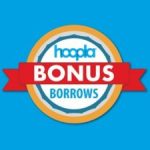
Overall hoopla usage stats seem to depend on patron awareness, total number of patrons, and other invisible factors like demographic interest in comics and ebooks. Libraries may also manage a much larger potential user group if they allow their entire state or region to register for a library card. They are constantly juggling dynamic demand while attempting to maximize service. Daniel Matsumoto, Electronic Resources Specialist for the San Francisco Public Library in California noted, “We always do a thorough budget review each fiscal year to see if [hoopla] checkout increases are possible.”
Not surprisingly, digital ebook usage has ballooned during the COVID-19 pandemic and libraries in general have been allocating greater digital resources vs. physical ones.
The largest library system I spoke to was Phoenix Public Library (AZ) with approximately one million cardholders. The smallest was Churchill County Library in Nevada with an estimated 9,000 cardholders.
Sheer number of library users doesn’t always mean more hoopla usage. Although Phoenix Public Library has roughly twice the cardholders of San Francisco Public Library (CA) and began hoopla in the same year (2014), San Francisco has approximately 14 times as many hoopla users.

The San Francisco Bay Area is a famous technology hub, which could account for some of the widespread platform adoption. Ray Barry, hoopla’s representative, also noted especially high comics readership in California: “Comic readership on hoopla is strong across libraries but it is California in the US and Ontario in Canada that have the highest readership levels per person.”
San Francisco’s library saw the most monthly hoopla comics borrows of those I spoke with: an average of 17,200 per month (they also offered 30 monthly borrows to patrons, the highest allocation), with the next highest being Phoenix at about 1,700 comics borrows per month (which offered 12 monthly borrows per patron).
Comics hoopla checkouts are also growing faster than general checkouts. Richland Library in South Carolina has observed 27% more comics being checked out on hoopla in 2020 compared to 2019, faster than their 10% general rise in hoopla checkouts. “Even prior to the pandemic, our usage was increasing,” Todd Barrett, Acquisitions Manager, said. “I think the numbers speak for themselves. Our customers love it.” San Francisco also saw a 62.4% increase in hoopla comic book checkouts over the past year, in contrast to their 49% general hoopla checkout rise. Are comics becoming more popular, or are more people reading them through libraries? Or is hoopla simply becoming a comics go-to?
Whatever the reasons for the differences, library staff know their audiences and most are managing to increase their borrow limits steadily.

Churchill County Library (NV), the smallest library system I spoke with, as well as the newest hoopla adopter at around six months usage, has about 60 hoopla users at the time of this writing and promotes the offering on social media. Carol Lloyd, Churchill’s director, takes a proactive approach. She remarked, “I know libraries that don’t buy electronic because they think they can’t afford it. And my thing is, I can’t afford not to. We have to offer this stuff because that’s where a lot of people are going.
“We’re always trying to figure out ways to serve people. I think it’s really important to get out in front of some of this stuff. [Even though] we’re small and rural, we’ve got people that are pretty sophisticated.”
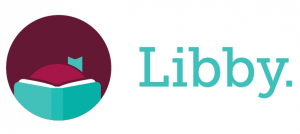
As Lloyd of Churchill County Library (NV) noted, OverDrive, a digital checkout platform which limits patrons to sharing whatever number of copies the library can afford to purchase, requires an upfront investment (an example could be a $65 John Grisham audio book), and the library has access to the copy for one or two years. The access could also go away sooner if the item is circulated beyond a certain threshold, depending on the license. Digital items on OverDrive also require curation: librarians need to specifically select what they anticipate will be popular. They might pay for a license to a book that is never checked out.
Physical comics, by contrast, don’t time out, but are subject to the same curation guesswork and other upfront costs. Barrett of Richland Library (SC) remarked, “All hoopla formats available to us are significantly less expensive than the physical product, especially when you consider the expense to order, receive, catalog and process the physical product. [The hoopla collection] never needs replacing due to damage.”
With hoopla, all titles are available to patrons at all times and libraries only pay for what is specifically used.
So what do comics publishers experience?
Results of comics publishers’ partnership with hoopla
I spoke to representatives from five publishers that offer a wide selection of their books on hoopla: Dark Horse, Image Comics, Oni Press, NBM Publishing, and Papercutz.
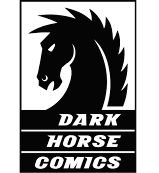
Nantier of NBM Publishing and Papercutz also offers nearly all titles on hoopla. Regarding those that are missing, he added, “Not all licensors want to be part of subscription models. Which is, frankly, 
Sainz at Oni Press said, “I believe we joined hoopla in 2017. And since then, every single year, we’ve seen our circulations increase. This past year with the pandemic, more patrons discovering hoopla, and more libraries joining the platform, we actually saw our book circulations [on hoopla] triple. So we’ve had really great success with them. And we’re excited to see how it keeps growing.”

hoopla seems to be a unique vehicle for reader exposure. Nantier of NBM and Papercutz noted that hoopla makes their books available “to an ever-wider audience. So it’s a wonderful opportunity that is certainly not cannibalizing sales from print in any way. It’s an add-on. In that sense, it’s a very positive development for graphic novels. It helps everyone.”
Graphic Novel Book Club
hoopla offers additional marketing for select comics on their platform, notably through their Graphic Novel Book Club. In 2018, hoopla created a general book club, adding a dedicated quarterly graphic novel club last summer to meet demand. They select one Spotlight title plus eight other titles from the best of what the hoopla team is reading, incorporating a mix of genres and popularity levels, considering content for teens, YA, and adults.
Oni Press’ Sheets is a Spotlight book this quarter. Sainz shared how hoopla builds resources to facilitate discussions by interviewing the author, creating a discussion guide, and “talking about why they at hoopla love the book and why readers love the book.” Image’s Ramos-Peterson also noted that the “reading guides, look books, posters, and bookmarks [for our recent book club selections like Paper Girls] were all well thought-out and well-crafted,” and that as a result, they had seen noticeable increases in readership on hoopla.
How comics creators are affected
In addition to the marketing exposure, which can result in additional sales, creators receive direct payment as a result of each hoopla borrow.
Sainz at Oni Press summarized the gist of the model: “The library pays a certain amount per borrow. And then hoopla takes a little bit of that. And we get some of that. Creators get paid based on book circulations, so every time their book gets borrowed, they get a portion of the revenue, much like physical book royalties.”
Nantier at NBM and Papercutz added, “For ebooks in general, [creators] get higher royalties as a percentage than they do for print.”
hoopla within the digital library landscape
Comics publishers tend to partner with multiple library platforms. Ramos-Peterson of Image said, “Since there is no single, standard platform being used nationwide, it’s important to make ourselves available through as many high quality outlets as possible and hoopla is a vital part of that.” And Bernardi of Dark Horse noted that “hoopla is among the strongest as far as generating revenue, but overall the library ebook services are a very small part of our business.”
Library Pass’ Comic Plus and OverDrive were also mentioned repeatedly. Gabe Lundeen, Deputy Director at Chattahoochee Valley Libraries (GA), was frustrated with the former app: “We had Comics Plus previously, and hoopla is far superior in every way. Comics Plus had a limited selection, an app that frequently crashed, a more difficult user interface, more difficult to search. Content did not update nearly as frequently.“ OverDrive was available at every library I spoke to. Several libraries said they prefer to pay for licenses on OverDrive only if a title isn’t available on hoopla.
Libraries thought hoopla’s user experience was modern and smooth. Matsumoto of San Francisco Public Library (CA) remarked, “hoopla is well above the curve. They’ve forged key publisher relationships and developed the best comic book reader, the proprietary Action View, in my opinion.”
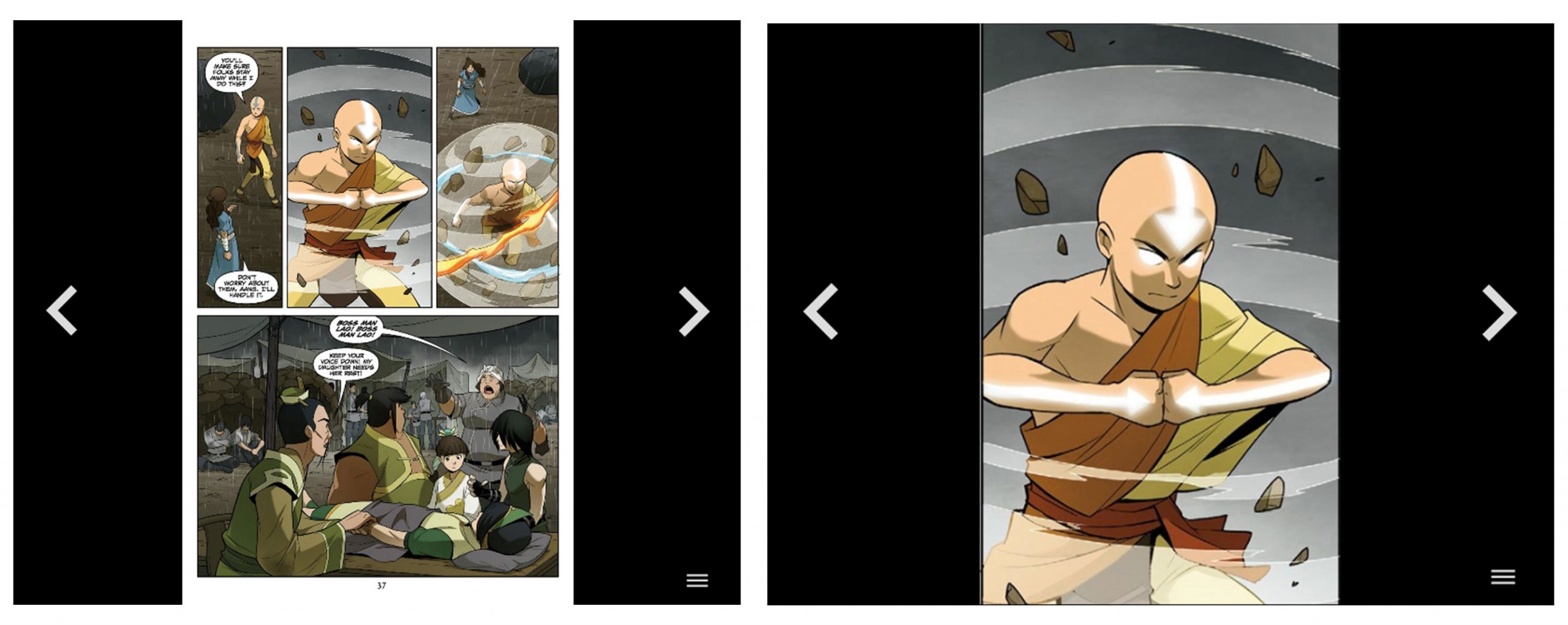
Notably, hoopla has also worked to make their product accessible to users with disabilities, with features like adjustable fonts and mobile voice commands for iOS and Android. They’ve proactively partnered with organizations like the Carroll Center for the Blind in Massachusetts to test accessibility. According to Director of Technology Brian Charlson at the Carroll Center, this attention to accessibility is often missing from their digital library competitors.
The hoopla platform for comics readers
hoopla’s partners amongst library staff and comics publishers talk up hoopla glowingly. With a widely-loved interface, a vast and readily accessible selection, and a dedication to the comics medium, this is definitely a platform for the comics fan.
Fun fact: Some of the most-read comics series on hoopla recently are children’s titles like Big Nate, Avatar: The Last Airbender, and Minecraft, with tie-ins to TV also seeing spikes like Invincible, Dune: The Graphic Novel, and anything related to the Scarlet Witch and Vision.
If you’ve never thought about reading digital comics through your public library, I encourage you to give it a try. In the meantime, I’ll keep reading lots of comics on hoopla, knowing my borrows directly support the ecosystem.


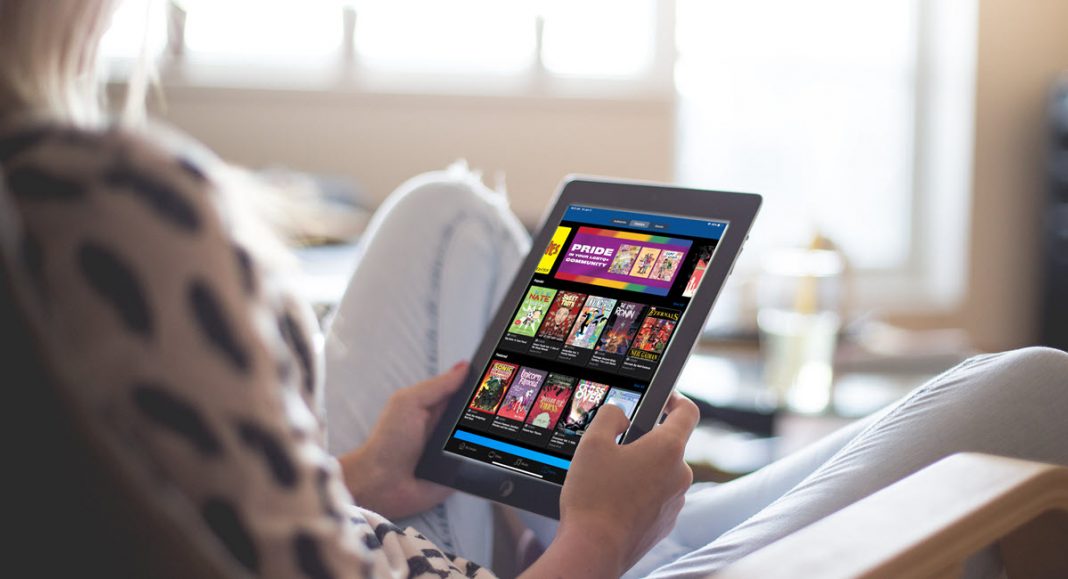
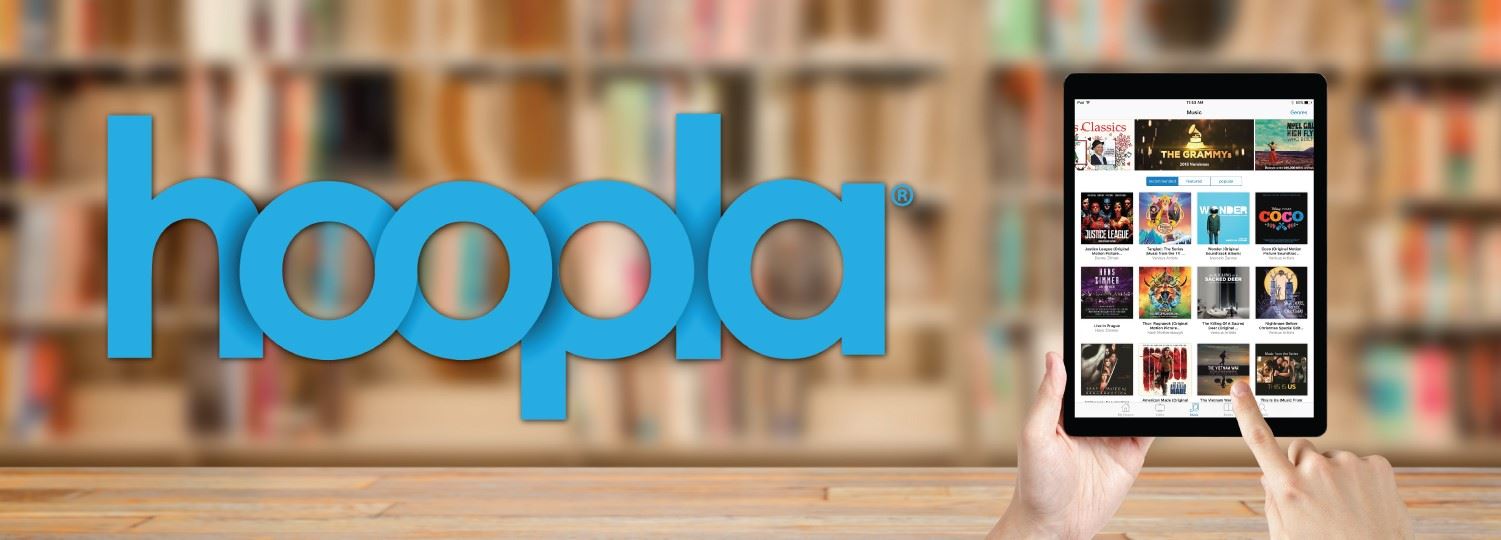
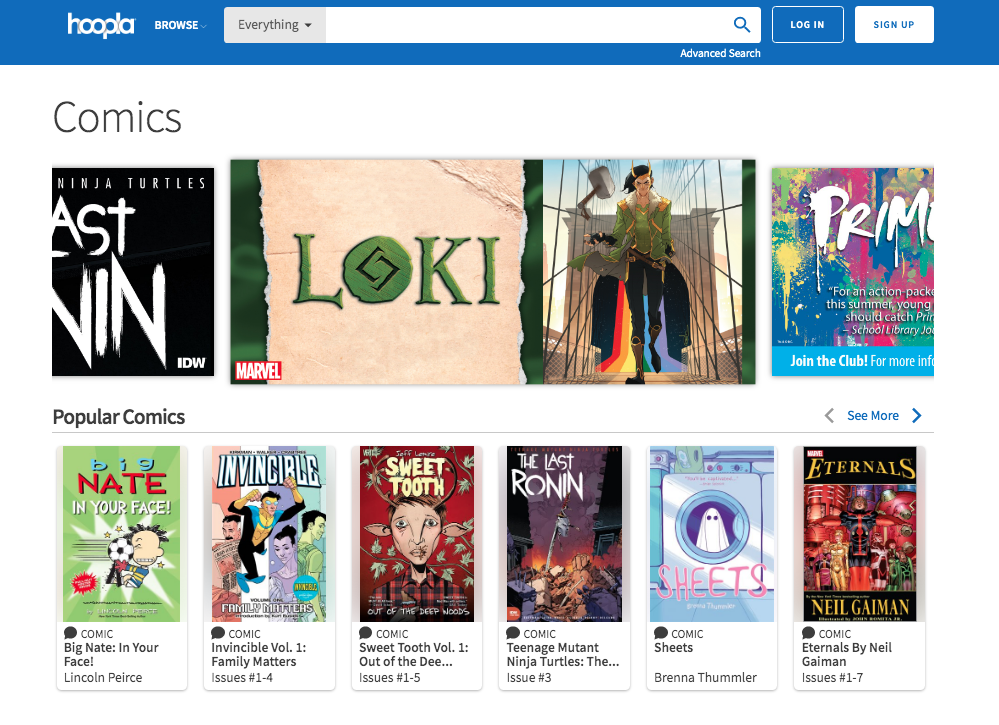
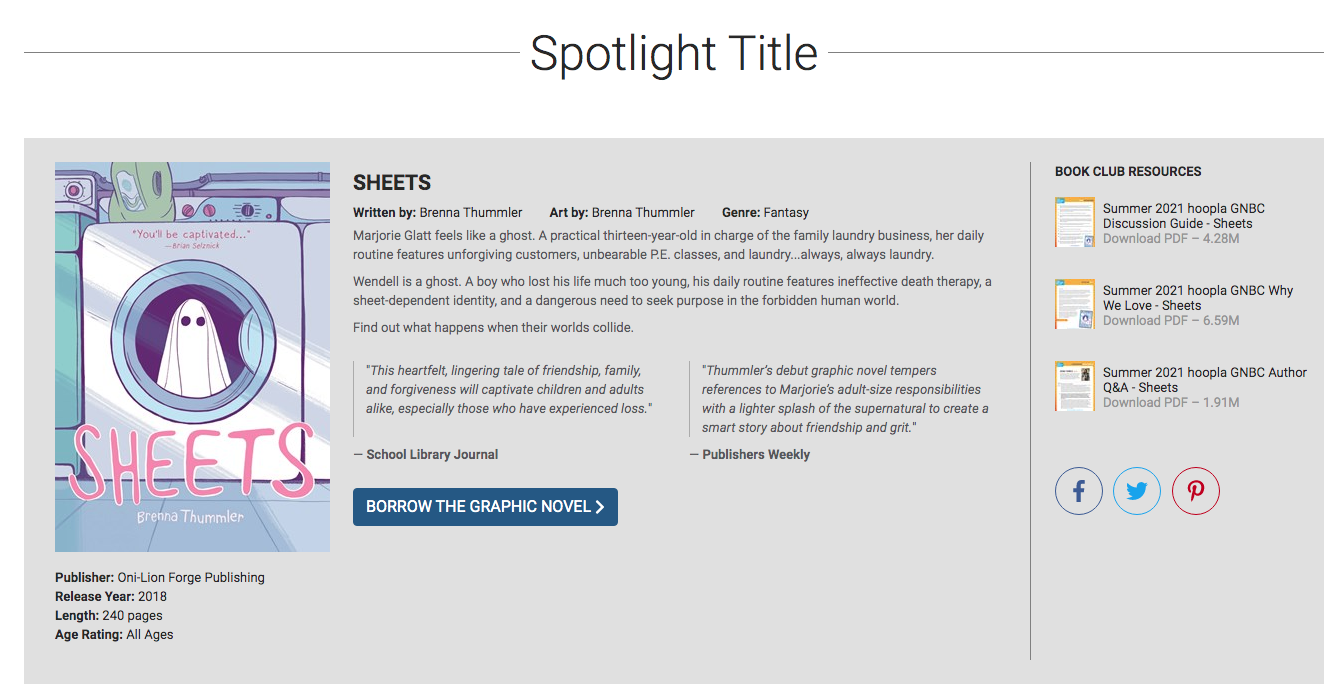
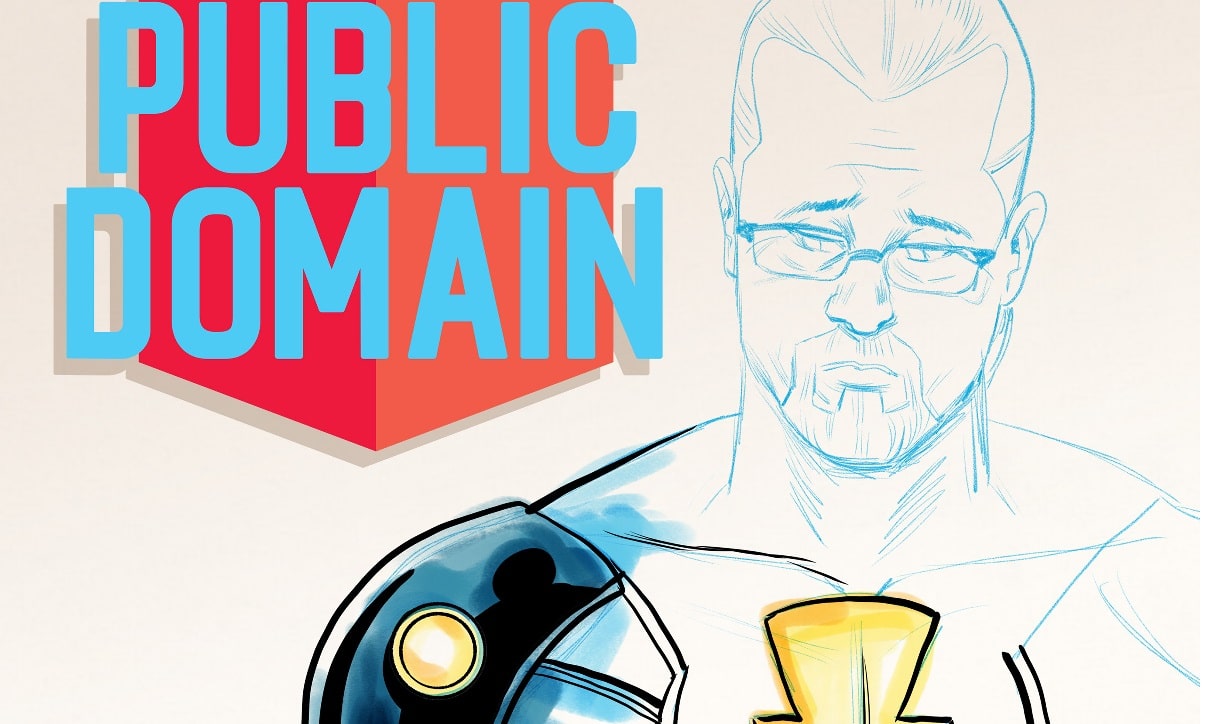





Great, in-depth article — appreciate the research and the detail. And a lot of useful info. Thanks!
Good article. I’ve been using Hoopla for a couple years now, mostly for comics but also the occasional tv show. I get 10 borrows a month thru the Napa County Library system. Most of my borrows are graphic novels, which count as only 1 borrow, but I also get Silver Age Archies at one comic per borrow. And you get 21 days to read them. You can’t go wrong with Hoopla.
I’ve been using Hoopla for years, too, and had to read your article when I saw the headline. Thanks for the informative article!
Hoopla is outstanding. As was this article. Well done!
Outstanding article Kerry! I’ve been using Hoopla for years and stumbled upon your article when I was wondering how much the creators were supported.
Comments are closed.